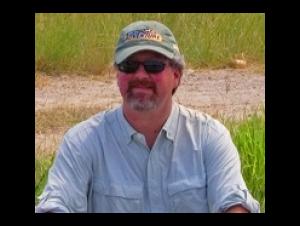

Please join the Great Lakes Center for a seminar presented by Dr. Robert J. Warren II, assistant professor from the Biology Department at Buffalo State. The seminar will be held on Thursday, October 9th from 12:15 to 1:30 p.m. in Science Building, Room 272.
A simplifying ecological assumption is that species occur in suitable habitat and avoid unsuitable habitat. This assumption is undermined, however, by species that persist in unsuitable habitat and fail to exploit suitable habitat – both of which may occur because of dispersal limitation. As such, plant populations can persist in suboptimal conditions for centuries and may be out of sync with optimal habitat at very large scales. Most evidence connecting indigenous cultures with plant dispersal is anecdotal, but historical records suggest that Native Americans may have transported and cultivated trees, including the honey locust, Gleditsia triacanthos.
Gleditsia triacanthos occurs in rocky uplands and xeric fields, as well as in the riverine corridors and floodplains where Cherokee (southeastern U.S. Native Americans) once inhabited settlements. Despite its apparently flexible habitat requirements, it appears severely dispersal limited without Cherokee cultivation. Dr. Warren combined extensive field surveys with field and greenhouse experiments to investigate G. triacanthos recruitment requirements, and to determine whether there is a quantifiable G. triacanthos association with former Cherokee settlements in the southern Appalachian Mountains (U.S.). He also investigated two proposed alternate dispersal modes for the tree: domestic livestock, which may ingest and distribute the seed pods (as did extinct megafauna) and riverine corridors and floodplains, which might transport floating seed pods.
The tree’s persistence in riverine habitat where the Cherokee preferred to build settlements does not match those habitats where G. triacanthos best recruits or disperses. Moreover, the tree remains severely dispersal limited – particularly along waterways and in floodplains – except where domestic livestock disperse it. These results suggest that the tree's current southern Appalachian distribution better reflects Native American cultivation 300-400 years ago than recruitment requirements. That a Cherokee cultivation legacy persists to the extent that G. triacanthos remains more strongly paired with centuries-old settlement sites than putative niche requirements suggests that great caution must be exercised when inferring niche requirements from species distributions. Moreover, given that G. triacanthos dispersal is severely limited, predicting its future distributions, particularly in disjunct populations, based on its current distribution is specious.
Some content on this page is saved in PDF format. To view these files, download Adobe Acrobat Reader free. If you are having trouble reading a document, request an accessible copy of the PDF or Word Document.
